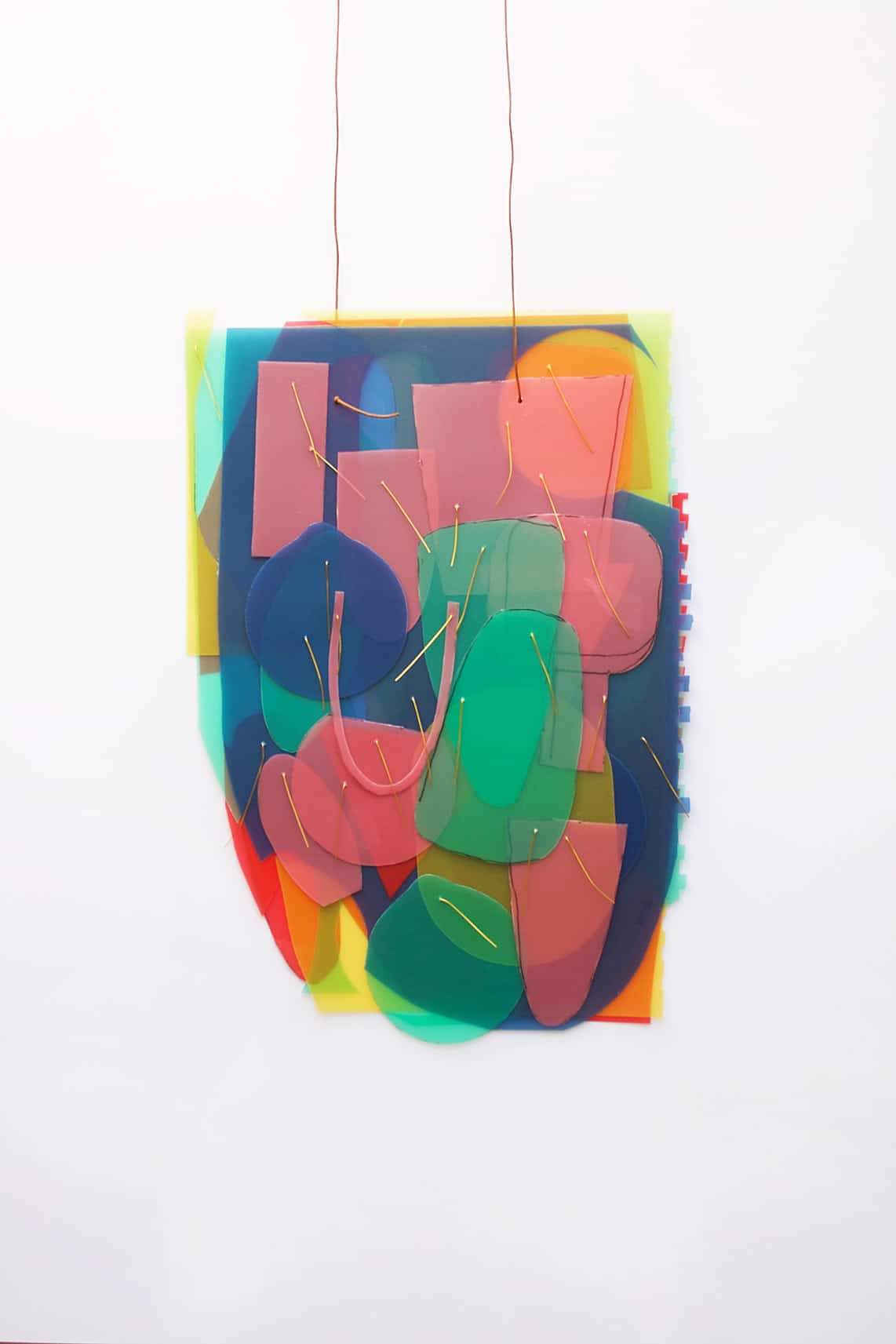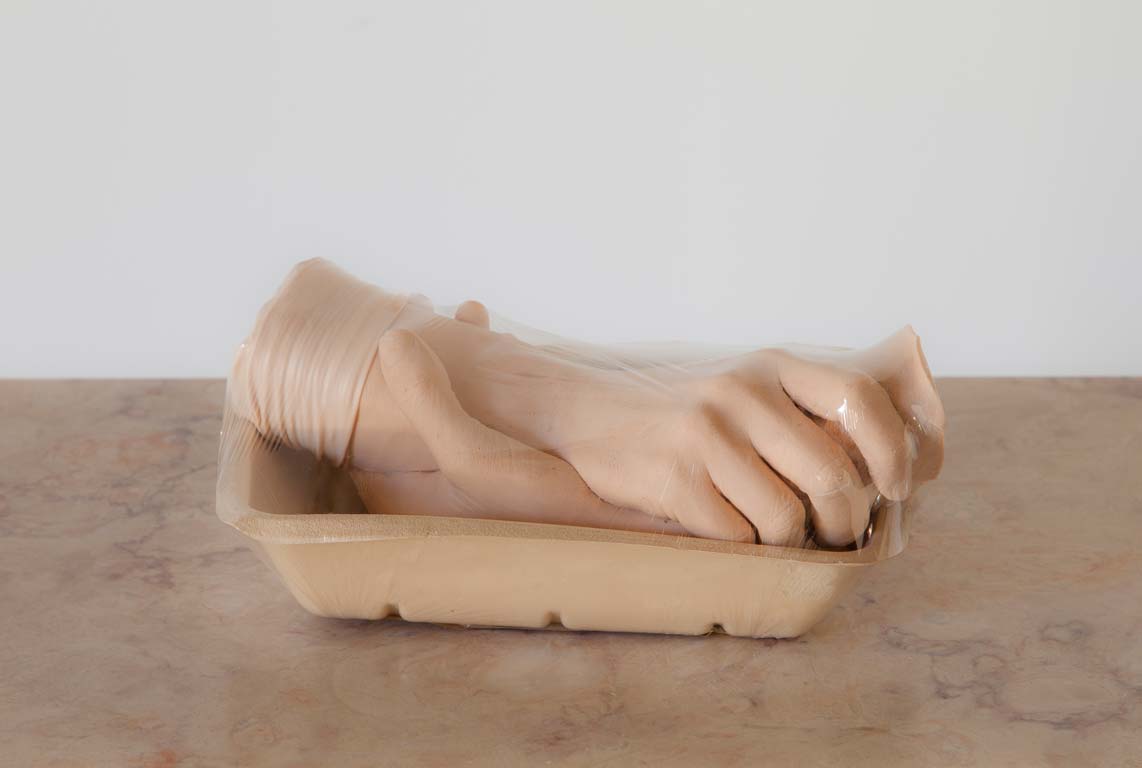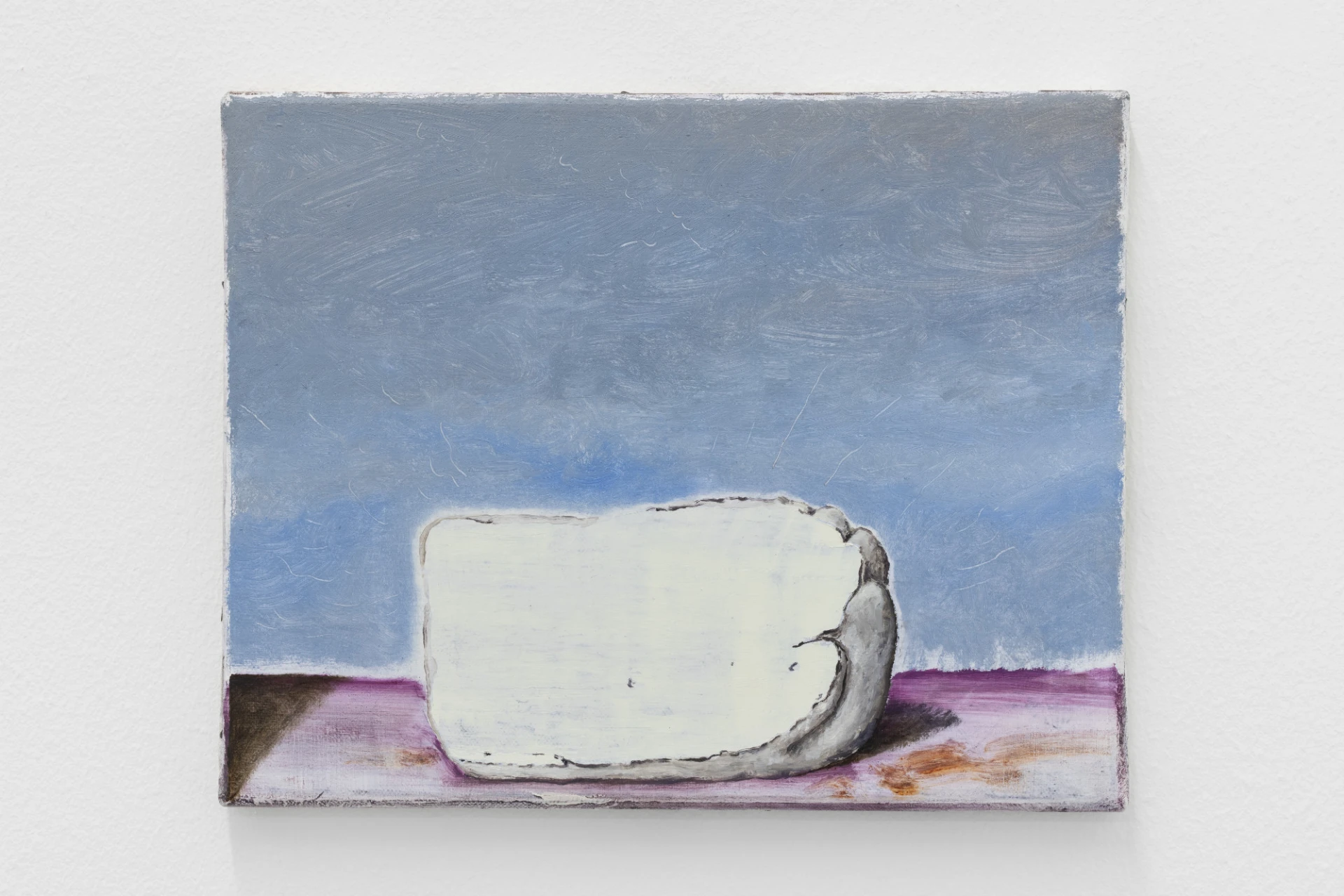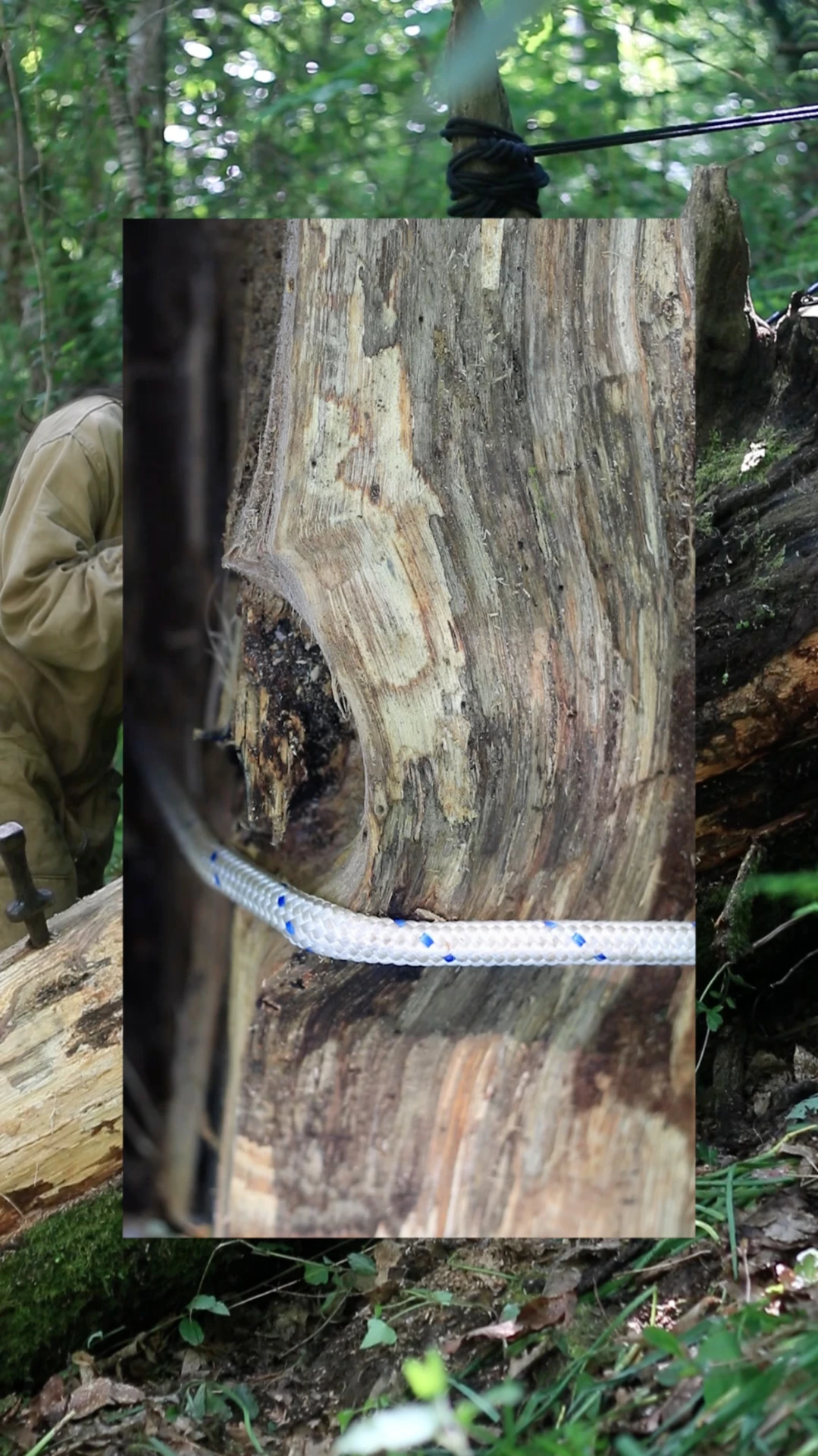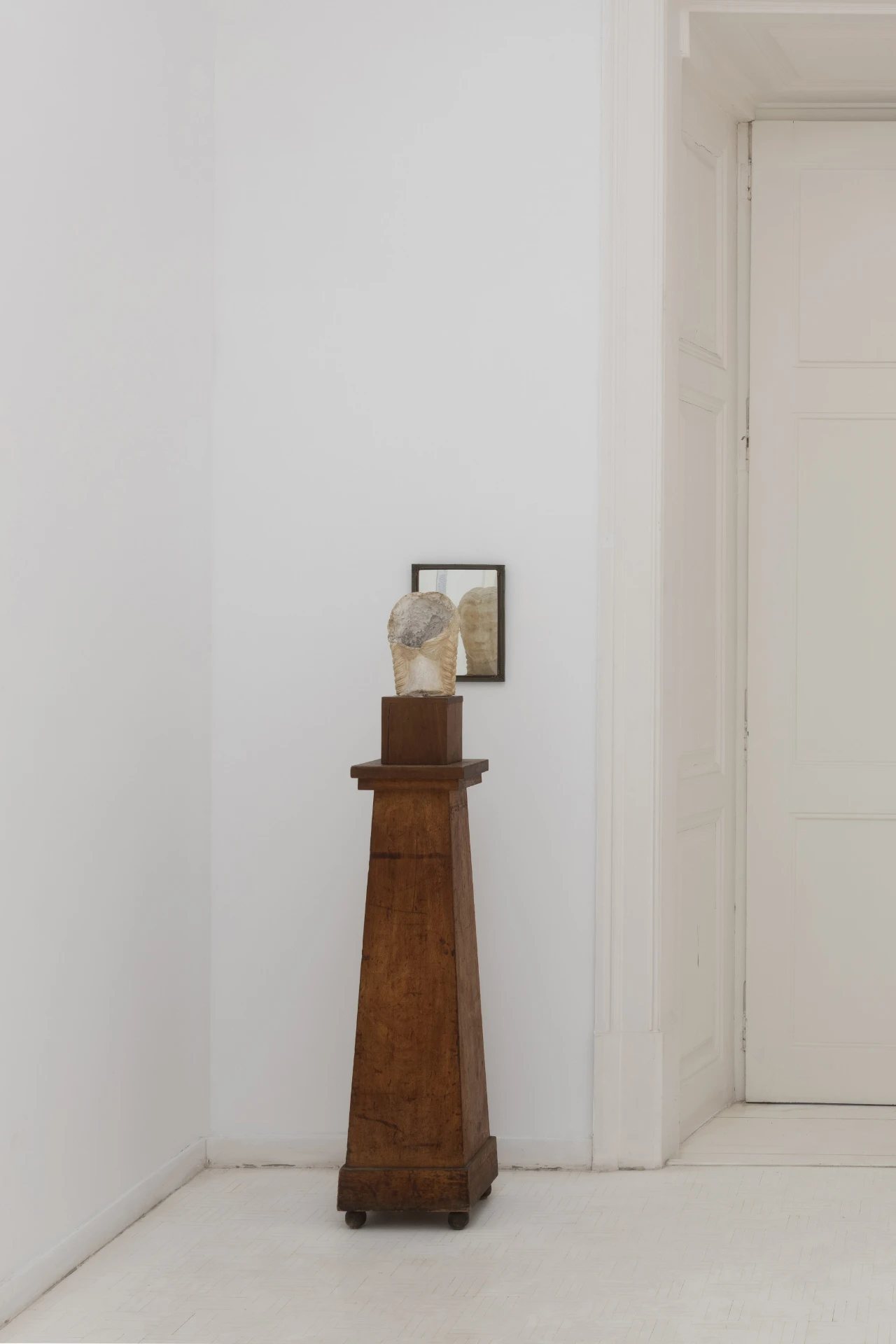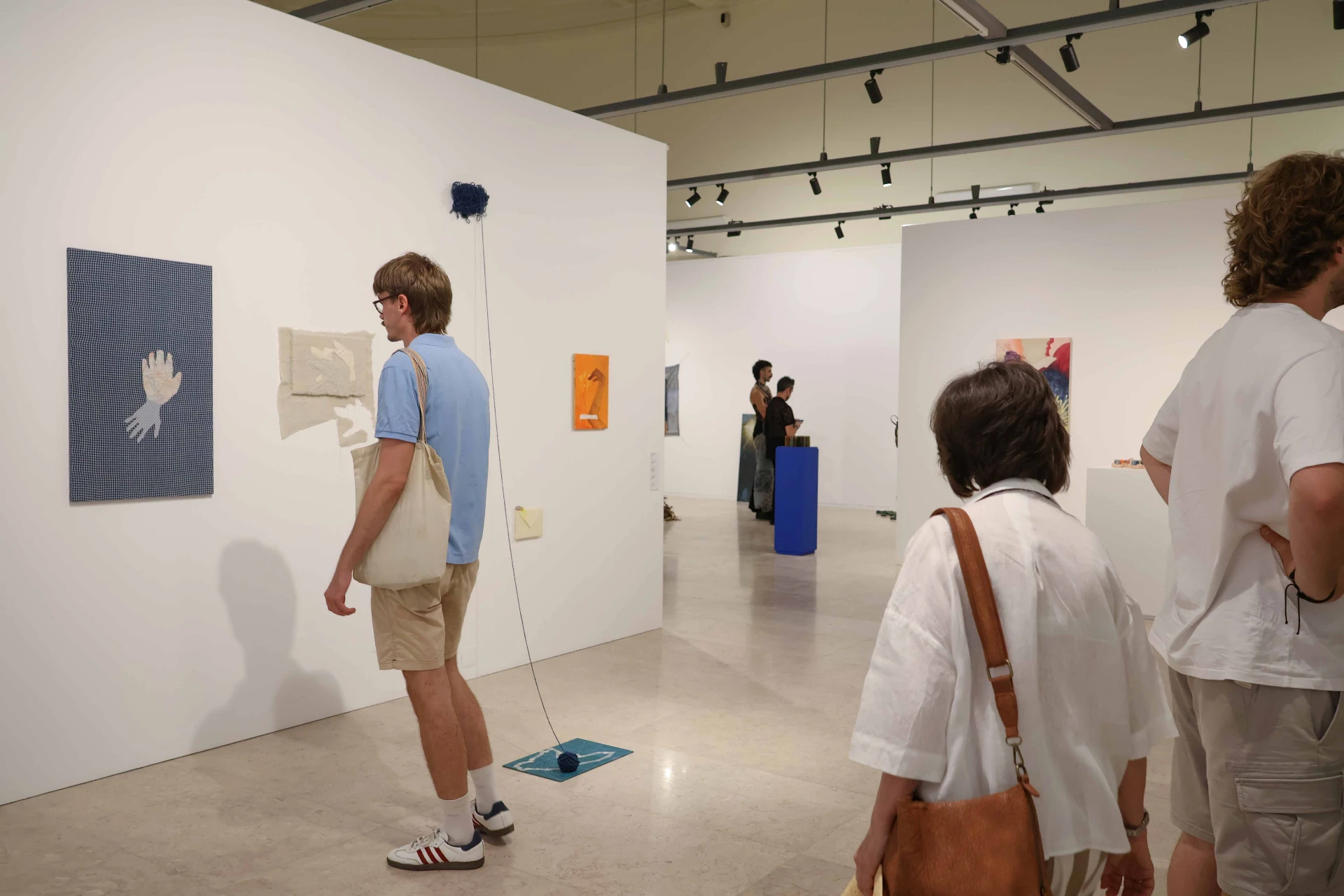In this exhibition, the artist relies on sound art as an autonomous discipline, treating it as the pivotal and most prominent element, along with sculpture and installation. The name of the exhibition, AWDITƆRJU, is the phonetic representation of the word auditorium, which means place, or location, where the listeners are gathered.
At the entrance to the room, a long hallway presents a row of seven-shaped ochre bell jars. Hanging longitudinally, they have woofers in the centre, also hanging by fine wires. Below, on the ground, black and wide bowls in the form of cylinders. They have burned oil, reminiscent of the naphtha stoves found in the building’s old boilers.
Each woofer emits the sound of a falling drop. The crystalline sound repeats itself along the hallway, gradually diluting itself between the other sounds that echo in the exhibition, like those from the columns scattered everywhere, or the ones entangled between the machines. The sounds keep spreading, chopping, enmeshing themselves in the visitor’s ear. Encompassing the whole imposing architecture of the building, and reaching the innermost places of our being. Leading us to ask, seek and understand.
The sound profusion that pop up a little bit everywhere forces us to delve into Nietzsche’s philosophy, when he reminded us that it was necessary to learn to listen to music, “to discern it by the ear, and to distinguish it, to isolate it and to delimit it, like a life in itself”. He also reminded us that we had to “overcome it, albeit the oddness” it might cause us. Until the very moment when we would become accustomed to it, in such a way that, like lovers, we could no longer bear to live without it.
The sound is elevated to the quality of place of continuous, unnatural effort of listening and learning. An openness to listen and welcome the stranger, the unfamiliar. Therefore, little by little, the listener becomes intrigued, ensnared, dazzled by the different sound stimuli. Composing the aptness of music, its community property; the relationship of human beings with each other.
We are led, by the corps sonore, to look up to the top of the longline windows, and to configure and perceive building corners unknown until this point. The long windows reveal trees branches whose rare leaves stubble for long periods of time, producing a sound caused by the wind. This sound also pierces the building interior, intersecting with other column-made sounds, and the other devices created by Pedro Tudela, which offer us a mishmash of reverberations of bells, of different sizes, machine sounds, unexpected rumours, among others.
When Kant referred to music, he acknowledged its interpenetrability but treated it differently. He referred to it as having some lack of civility, since, by touching an instrument, its influence extended beyond what was intended or expected of it. Enforcing its presence in the neighbourhood. (This was the opposite to what happened when one stood in front of an image. If they felt displeased by it, they could always look away.)
On the contrary, John Cage, in 1937, when he drew attention to the unexpected background “noise” of the sounds of everyday life, particularly the noise of cars in the city, unwanted by many, the composer emphasized the creative source of those same sounds, mentioning that they could be used as if they were musical instruments themselves. They would be capable of producing unexpected sounds, always different. In 1952, Cage presents the composition 4’33, at Woodstock, New York, materializing the power of interpenetrability and sound aggregation.
AWDITƆRJU by Pedro Tudela to see at Sala das Cadeiras, MAAT, until 13 October.
